Abstract
Ribosomes of Streptomyces azureus, which produces thiostrepton, are resistant to thiostrepton by virtue of being unable to bind the antibiotic. These ribosomes are also resistant to a number of other antibiotics (the thiostrepton group) which may share a common ribosomal binding site and a common mode of action with thiostrepton. Conversely, Bacillus pumilis and a strain of micrococcus, which produce the (probably identical) antibiotics micrococcin P and micrococcin, respectively, possess ribosomes which are susceptible to these antibiotics in vitro, although the organisms themselves are resistant.
Full text
PDF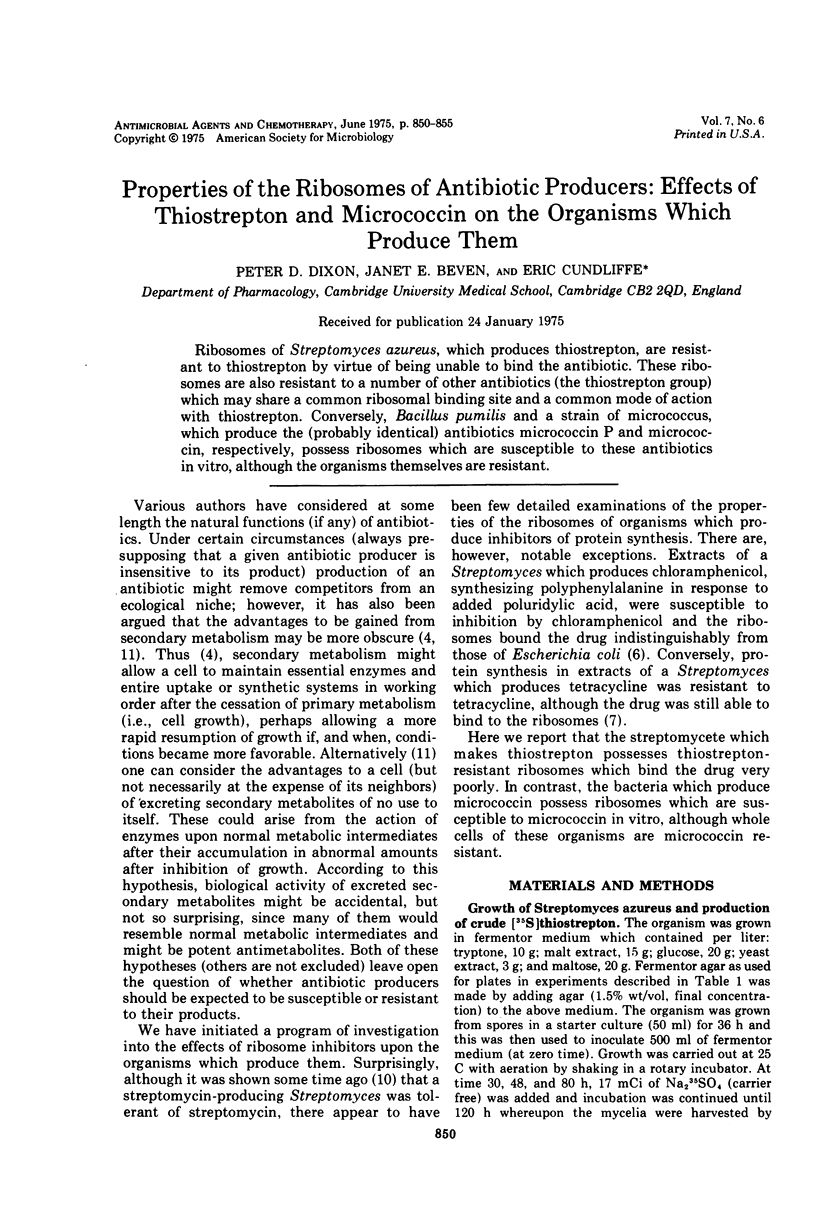
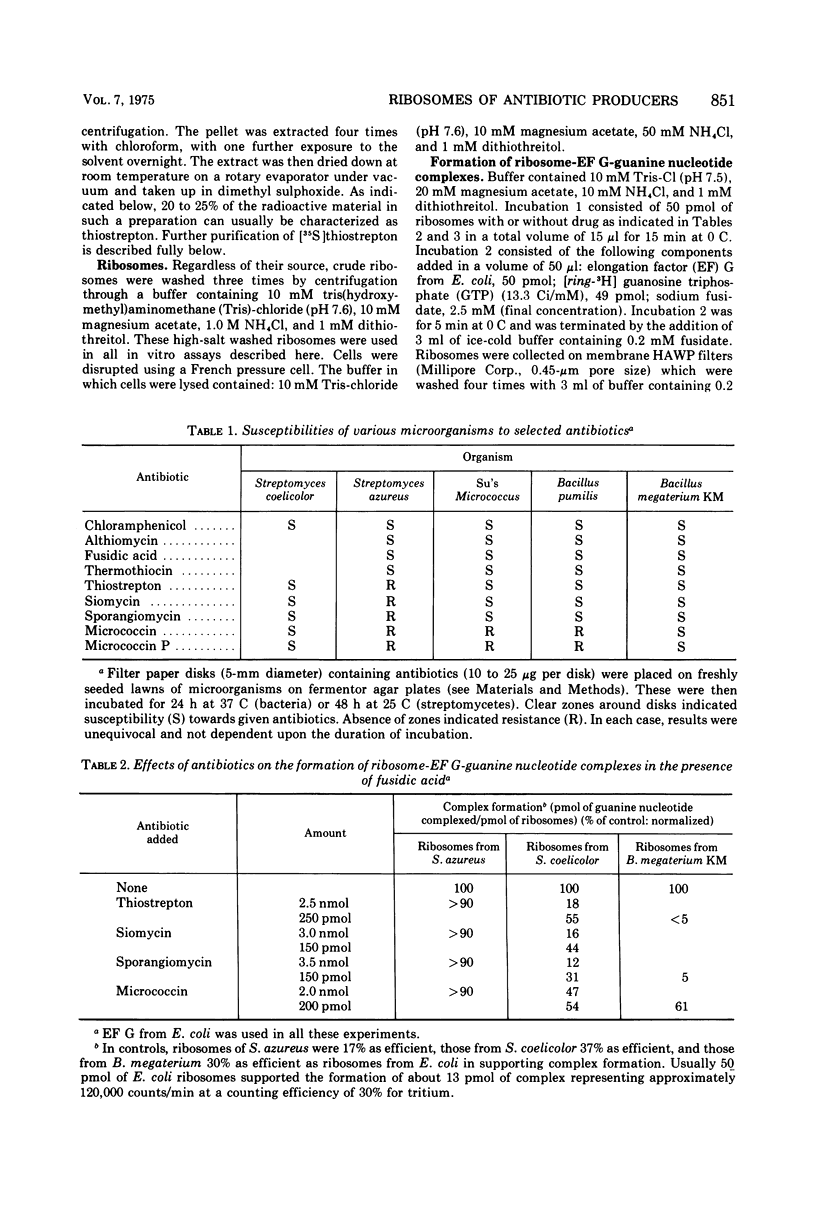
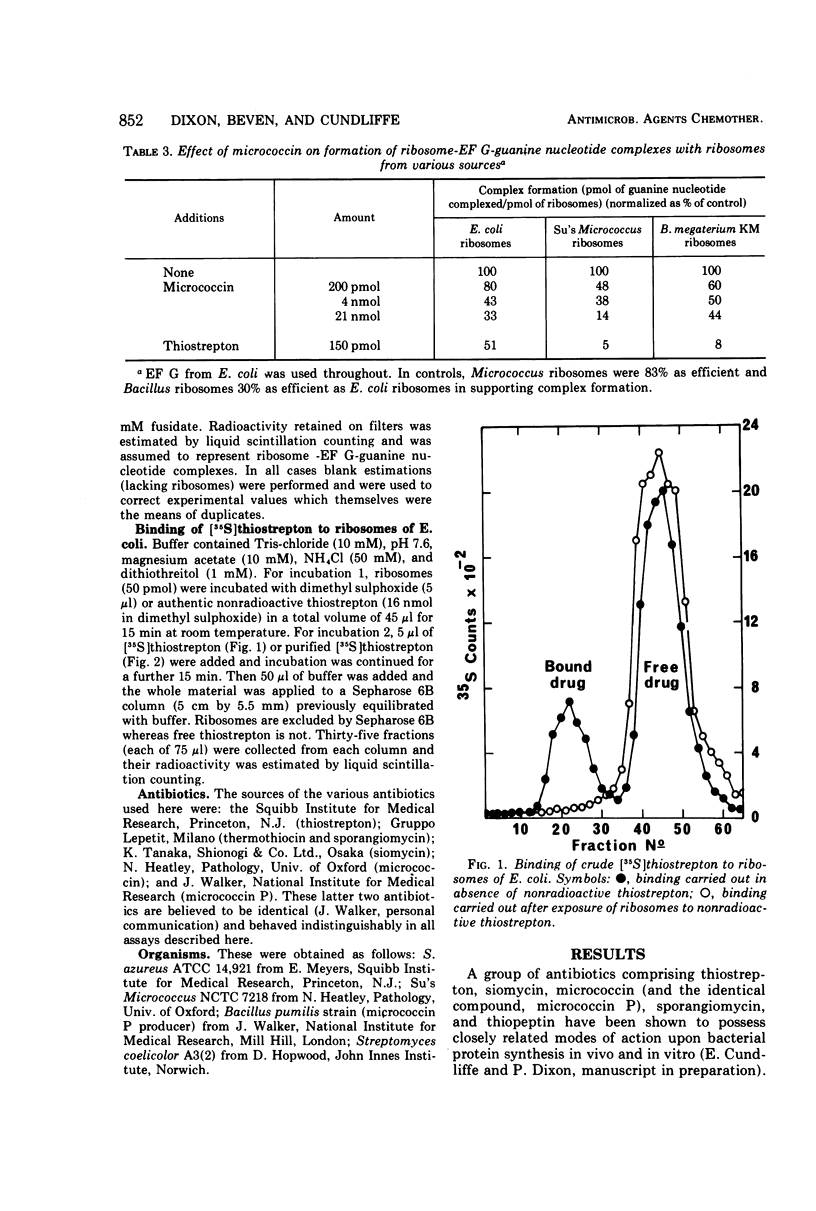
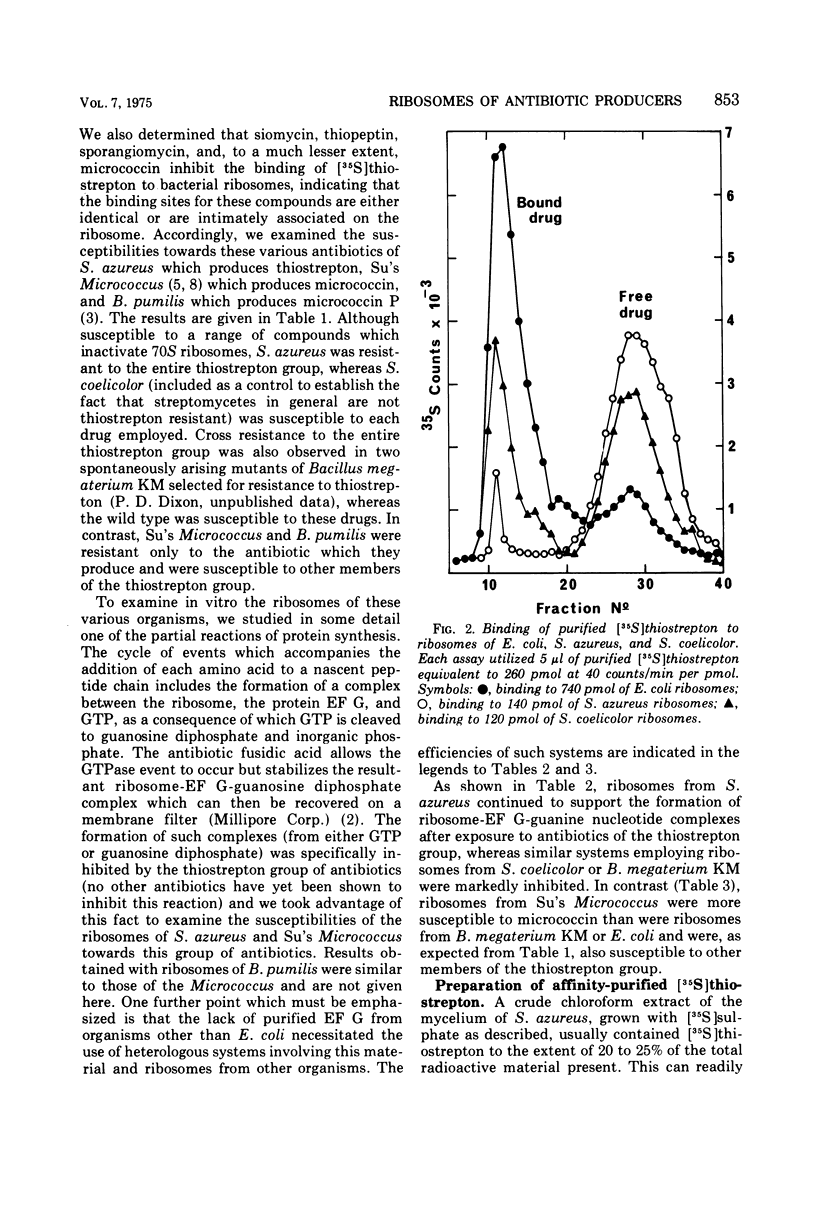
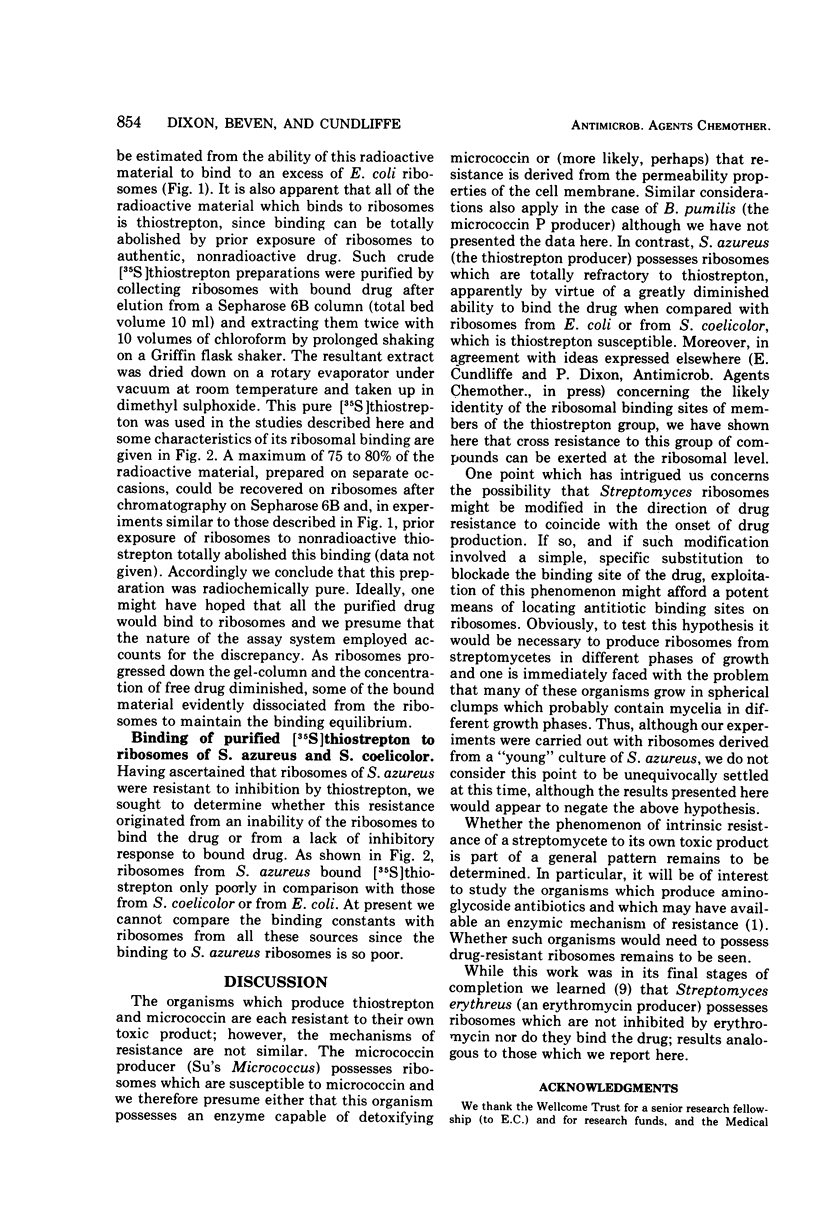
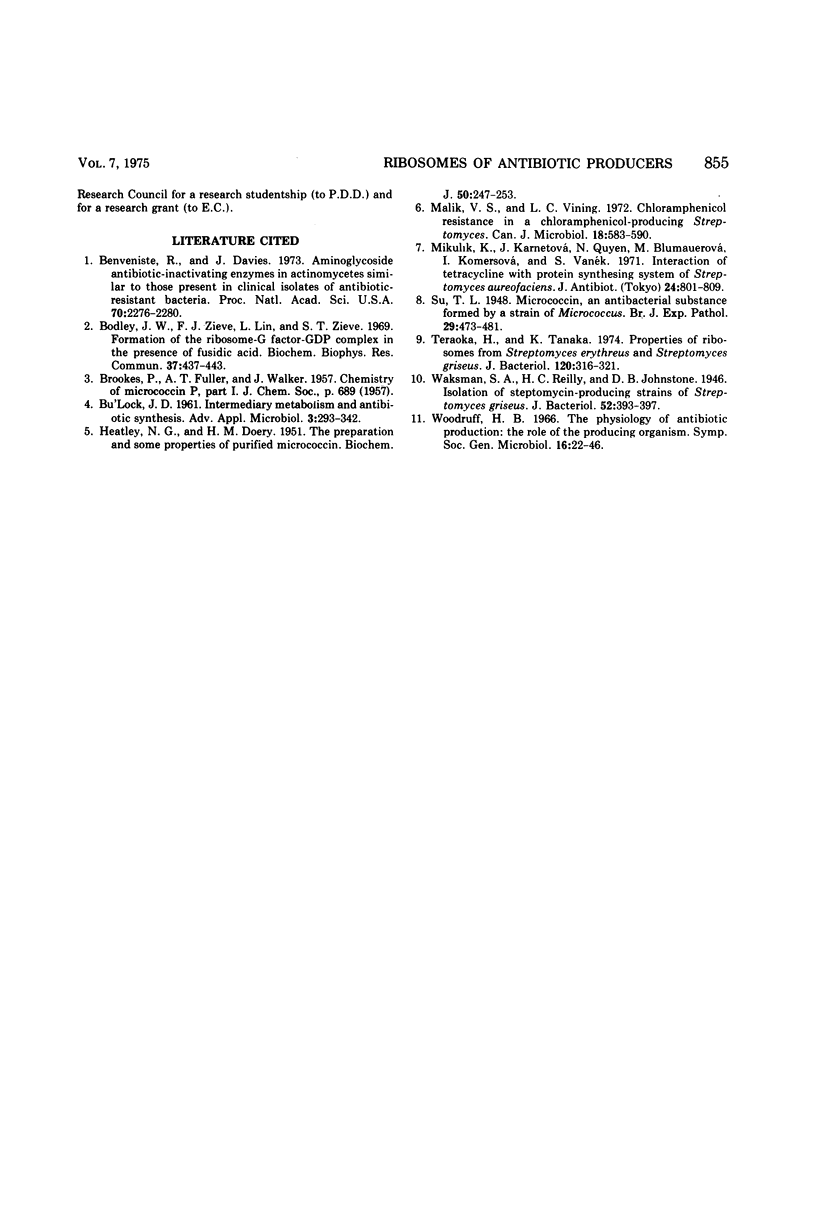
Selected References
These references are in PubMed. This may not be the complete list of references from this article.
- BU'LOCK J. D. Intermediary metabolism and antibiotic synthesis. Adv Appl Microbiol. 1961;3:293–342. doi: 10.1016/s0065-2164(08)70514-8. [DOI] [PubMed] [Google Scholar]
- Benveniste R., Davies J. Aminoglycoside antibiotic-inactivating enzymes in actinomycetes similar to those present in clinical isolates of antibiotic-resistant bacteria. Proc Natl Acad Sci U S A. 1973 Aug;70(8):2276–2280. doi: 10.1073/pnas.70.8.2276. [DOI] [PMC free article] [PubMed] [Google Scholar]
- Bodley J. W., Zieve F. J., Lin L., Zieve S. T. Formation of the ribosome-G factor-GDP complex in the presence of fusidic acid. Biochem Biophys Res Commun. 1969 Oct 22;37(3):437–443. doi: 10.1016/0006-291x(69)90934-6. [DOI] [PubMed] [Google Scholar]
- HEATLEY N. G., DOERY H. M. The preparation and some properties of purified micrococcin. Biochem J. 1951 Dec;50(2):247–253. doi: 10.1042/bj0500247. [DOI] [PMC free article] [PubMed] [Google Scholar]
- Mikulík K., Karnetová J., Quyen N., Blumauerová M., Komersová I., Vanek Z. Interaction of tetracycline with protein synthesizing system of Streptomyces aureofaciens. J Antibiot (Tokyo) 1971 Dec;24(12):801–809. doi: 10.7164/antibiotics.24.801. [DOI] [PubMed] [Google Scholar]
- Teraoka H., Tanaka K. Properties of ribosomes from Streptomyces erythreus and Streptomyces griseus. J Bacteriol. 1974 Oct;120(1):316–321. doi: 10.1128/jb.120.1.316-321.1974. [DOI] [PMC free article] [PubMed] [Google Scholar]
- Waksman S. A., Reilly H. C., Johnstone D. B. Isolation of Streptomycin-producing Strains of Streptomyces griseus. J Bacteriol. 1946 Sep;52(3):393–397. [PMC free article] [PubMed] [Google Scholar]


